Fiber-reinforced concrete (FRC) is a composite material consisting of a cementitious matrix reinforced with dispersed fibers, such as steel, glass, synthetic polymers, natural fibers etc.. The addition of fibers significantly improves the mechanical properties of concrete, enhancing its tensile strength, ductility, and resistance to cracking and impact. FRC finds importance in various construction applications where durability, toughness, and enhanced performance are crucial, including pavements, structural elements, precast components, and overlays. By mitigating cracking and improving durability, FRC contributes to the longevity and sustainability of concrete structures, reducing maintenance needs and ensuring structural integrity over time.
Advantages of Fiber-reinforced concrete (FRC)
1. Enhanced Strength- Fiber reinforced concrete (FRC) demonstrates superior strength compared to traditional concrete mixes. By incorporating various types of fibers, such as steel, glass, or synthetic polymers, into the concrete matrix, FRC significantly enhances its tensile and flexural strength. This reinforcement ensures greater structural integrity and resilience, particularly under bending or tension loads, effectively minimizing the risk of structural failure and ensuring long-term durability.
2. Crack Control- One of the notable advantages of FRC is its exceptional crack control capabilities. The inclusion of fibers within the concrete matrix mitigates the formation and propagation of cracks, significantly reducing the risk of structural damage. This crack resistance not only enhances the appearance of the structure but also maintains its functionality and safety over time, minimizing the need for costly repairs and maintenance.
3. Increased Durability- FRC offers enhanced durability, thanks to the reinforcing fibers dispersed throughout the concrete. These fibers provide additional protection against environmental factors, including freeze-thaw cycles, chemical exposure, and abrasion. As a result, FRC structures exhibit greater resilience and longevity, ensuring sustained performance and reliability in harsh conditions.
4. Impact Resistance- Fiber reinforced concrete excels in impact resistance, a critical attribute for structures subjected to heavy loads or abrasive forces. The presence of fibers enhances the concrete's ability to withstand impacts and abrasions, minimizing surface damage and preserving structural integrity. This durability against impact ensures the longevity and safety of FRC structures, particularly in high-traffic areas or industrial environments.
5. Design Flexibility- FRC offers unparalleled design flexibility, owing to the versatility of fiber types and dosage options. Designers and engineers can tailor FRC mixes to meet specific project requirements, optimizing material performance and structural design. This flexibility enables the realization of innovative and customized solutions for various construction applications, ensuring optimal performance and efficiency.
6. Reduced Maintenance- Due to its enhanced durability and resistance to cracking, FRC structures require minimal maintenance over their service life. By minimizing the occurrence of cracks and deterioration, FRC significantly reduces the need for repairs and interventions, resulting in long-term cost savings and operational efficiency.
7. Construction Efficiency- FRC facilitates construction efficiency through its compatibility with conventional construction methods. It can be pumped, poured, and finished using standard equipment and techniques, streamlining the construction process and reducing labor and time requirements. This construction efficiency translates to faster project delivery and enhanced productivity, ensuring timely completion and cost-effectiveness.
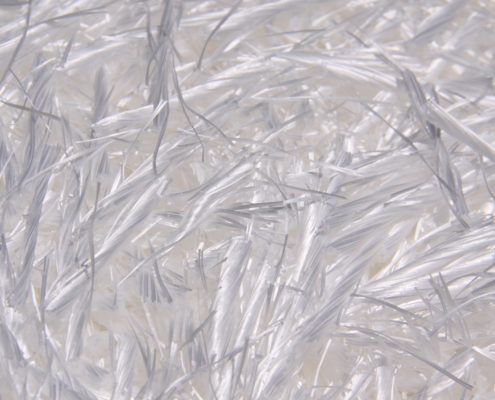
Types of Fiber-reinforced concrete (FRC)
1. Steel Fiber Reinforced Concrete (SFRC): Steel Fiber Reinforced Concrete (SFRC) incorporates steel fibers, typically made of carbon or stainless steel, into the concrete mix. These fibers are dispersed throughout the concrete matrix, providing enhanced tensile and flexural strength. SFRC is particularly effective in controlling cracking and increasing impact resistance, making it suitable for a wide range of applications. It is commonly used in industrial flooring, tunnel linings, and precast elements where durability and structural integrity are paramount. The addition of steel fibers also improves the ductility of the concrete, allowing it to withstand dynamic loads and harsh environmental conditions.
2. Glass Fiber Reinforced Concrete (GFRC): Glass Fiber Reinforced Concrete (GFRC) utilizes glass fibers, which are lightweight and corrosion-resistant, to reinforce the concrete mix. These fibers are typically added in the form of chopped strands or continuous filaments. GFRC offers exceptional versatility and aesthetic appeal, making it ideal for architectural and decorative applications. It is commonly used in cladding, facades, and ornamental elements where lightweight construction and intricate designs are desired. GFRC offers the advantage of being customizable in terms of color, texture, and finish, allowing designers to achieve unique and visually stunning results.
3. Synthetic Fiber Reinforced Concrete: Synthetic Fiber Reinforced Concrete incorporates synthetic fibers, such as polypropylene or nylon, into the concrete mix to enhance its durability and impact resistance. These fibers are available in various forms, including monofilament, fibrillated, and macro fibers, each offering specific performance benefits. Synthetic FRC is known for its ability to improve crack control, reduce plastic shrinkage cracking, and enhance toughness. It is commonly used in applications requiring enhanced durability, such as pavements, bridge decks, and shotcrete applications. Synthetic fibers offer the advantage of being lightweight, non-corrosive, and easy to handle, making them a popular choice for a wide range of construction projects.
4. Natural Fiber Reinforced Concrete: Natural Fiber Reinforced Concrete utilizes fibers derived from renewable sources, such as cellulose, sisal, or jute, as reinforcement in the concrete mix. These fibers are biodegradable, sustainable, and environmentally friendly, making them an attractive option for green building projects. Natural FRC offers good bonding with concrete and can enhance its toughness and crack resistance. It is commonly used in applications where sustainability is a priority, such as eco-friendly construction, green roofs, and low-impact development projects. Natural fibers offer the advantage of being cost-effective and readily available, making them an excellent choice for projects seeking sustainable construction materials.
5. Polymer Fiber Reinforced Concrete (PFRC): Polymer Fiber Reinforced Concrete (PFRC) integrates synthetic polymer fibers, like polypropylene, polyester, or acrylic, into the concrete mixture. These fibers serve to enhance crucial properties such as crack resistance, impact strength, and overall durability. PFRC finds extensive use in environments demanding superior performance, such as marine structures, chemical containment areas, and wastewater treatment facilities. Its ability to withstand harsh conditions makes PFRC an indispensable material in industries where durability is paramount, ensuring long-lasting and resilient structures.
6. Carbon Fiber Reinforced Concrete (CFRC): Carbon Fiber Reinforced Concrete (CFRC) leverages the lightweight and high-strength characteristics of carbon fibers to bolster the concrete's structural integrity. Renowned for its exceptional tensile strength and stiffness, CFRC is a preferred choice in industries requiring superior performance and lightweight materials. It finds application in aerospace, automotive, and high-tech sectors, as well as in architectural and civil engineering projects where a robust strength-to-weight ratio is essential. CFRC enables the construction of lightweight yet durable structures, making it an ideal choice for projects demanding both strength and efficiency.
7. Basalt Fiber Reinforced Concrete (BFRC): Basalt Fiber Reinforced Concrete (BFRC) incorporates basalt fibers, derived from volcanic rock, to enhance the concrete's properties. Basalt fibers offer outstanding tensile strength, chemical resistance, and thermal stability, making BFRC suitable for high-performance concrete applications. This type of FRC finds extensive use in infrastructure projects such as bridges, dams, and highways, as well as in industrial flooring and underground structures. BFRC's durability and longevity make it a preferred choice in projects where resilience to environmental factors and structural integrity are crucial.
8. Aramid Fiber Reinforced Concrete (AFRC): Aramid Fiber Reinforced Concrete (AFRC) utilizes aramid fibers, such as Kevlar, renowned for their exceptional strength, stiffness, and resistance to abrasion and impact. AFRC is commonly used in ballistic-resistant structures like protective barriers, and security walls, as well as in high-performance concrete applications requiring superior mechanical properties. Its ability to withstand extreme conditions and provide enhanced protection makes AFRC indispensable in projects where safety and security are paramount concerns. AFRC ensures the construction of structures capable of withstanding severe impacts while maintaining structural integrity.
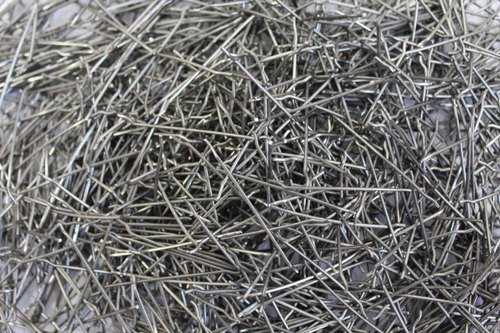
Applications of Fiber-reinforced concrete (FRC)
1. Structural Elements: FRC is commonly used in the construction of structural elements such as columns, beams, and slabs to improve their strength, durability, and resistance to cracking. By incorporating fibers into the concrete mix, these elements can better withstand loads, vibrations, and environmental factors, ensuring the overall stability and safety of the building.
2. High-Rise Construction: In high-rise buildings, where structural performance is crucial, FRC is often employed to enhance the strength and durability of critical components. The use of FRC in core walls, shear walls, and floor systems helps minimize deflections, control cracking, and improve seismic performance, allowing for the construction of taller and more resilient structures.
3. Facades and Cladding: FRC panels and cladding systems are utilized to create aesthetically pleasing facades while providing structural support and weather resistance. These panels can be customized with textures, patterns, and finishes to achieve the desired architectural aesthetic, making them popular choices for modern building exteriors.
4. Interior Partitions and Walls: FRC is used in interior partitions and walls to improve their impact resistance, fire resistance, and acoustic performance. By incorporating fibers into lightweight concrete mixes, interior walls can better withstand daily wear and tear, minimize noise transmission, and enhance occupant comfort and safety.
5. Precast Elements: FRC is widely used in the production of precast concrete elements such as panels, stairs, and decorative features for building construction. Precast FRC offers advantages such as ease of installation, consistent quality, and rapid construction, making it a cost-effective solution for both residential and commercial projects.
6. Fire Protection: FRC is employed in fire-resistant applications such as fireproofing coatings, fire barriers, and smoke barriers to enhance building safety. The addition of fibers helps improve the concrete's ability to withstand high temperatures and prevent spalling, providing crucial fire protection for structural elements and occupants.
7. Exterior Pavements and Landscaping: FRC is utilized in exterior pavements, walkways, and landscaping features to enhance their durability and resistance to weathering. Fiber reinforcement helps prevent cracking and surface deterioration caused by freeze-thaw cycles, heavy foot traffic, and environmental exposure, ensuring long-term performance and aesthetics.
8. Retrofitting and Rehabilitation: FRC is used in building retrofitting and rehabilitation projects to strengthen existing structures and extend their service life. By applying FRC overlays, jackets, or reinforcements to deteriorated elements, such as columns, beams, and balconies, buildings can be upgraded to meet current safety standards and performance requirements.
9. Façade Panels: FRC is utilized in the fabrication of façade panels for building exteriors. These panels offer structural support, weather resistance, and architectural versatility. With FRC, architects can create intricate designs, textures, and patterns on façades, enhancing the aesthetic appeal of the building while ensuring structural integrity and durability.
10. Balconies and Terraces: FRC is commonly used in the construction of balconies, terraces, and outdoor living spaces. Its enhanced durability and crack resistance make it suitable for withstanding exposure to weather elements such as rain, snow, and UV radiation. FRC balconies and terraces offer long-lasting performance and require minimal maintenance, providing homeowners with durable outdoor living areas.
11. Staircases and Railings: FRC is employed in the construction of staircases and railings to provide structural reinforcement and aesthetic appeal. FRC stairs offer improved impact resistance and crack control, ensuring the safety and longevity of the building's vertical circulation elements. Additionally, FRC railings can be customized to match the design and style of the building, enhancing its overall architectural character.
12. Retaining Walls: FRC is used in the construction of retaining walls to stabilize slopes, prevent soil erosion, and create usable outdoor spaces. FRC retaining walls offer enhanced durability, crack resistance, and structural stability compared to traditional concrete walls. They are commonly used in residential, commercial, and landscape projects to create visually appealing and functional outdoor environments.
13. Decorative Features: FRC used to create decorative features such as ornamental panels, sculptures, and artistic installations in building interiors and exteriors. Its moldability, texture, and finish options allow architects and designers to explore creative possibilities and add unique elements to building designs. FRC decorative features enhance the visual interest and ambiance of spaces, creating memorable architectural experiences for occupants and visitors.
14. Basement Walls: FRC is used in the construction of basement walls to provide waterproofing, crack resistance, and structural reinforcement. FRC basement walls offer improved durability and resistance to hydrostatic pressure, preventing water infiltration and moisture-related problems such as mold and mildew growth. They are commonly used in residential and commercial buildings to create dry and habitable below-grade spaces.
15. Sound Barrier Walls: FRC is utilized in the construction of sound barrier walls along highways, railways, and industrial sites to mitigate noise pollution and improve acoustic comfort. FRC sound barrier walls offer superior noise absorption and transmission loss properties, reducing the impact of traffic noise on nearby buildings and communities. They contribute to creating quieter and more livable urban environments while providing durable and cost-effective noise mitigation solutions.
Application method of Fiber-reinforced concrete (FRC)
The application method of fiber reinforced concrete (FRC) involves several steps to ensure proper mixing, placement, and finishing of the material. Here's a general outline of the application method for FRC:
1. Material Preparation:
- Gather all necessary materials, including cement, aggregates, water, and fibers (such as steel, synthetic, or natural fibers).
- Ensure that the concrete mix design meets the project specifications and requirements, taking into account factors like strength, workability, and fiber content.
2. Mixing:
- Use a concrete mixer to combine the cement, aggregates, water, and any other additives according to the predetermined mix design.
- Gradually add the fibers to the mix while continuing to mix until they are evenly distributed throughout the concrete.
3. Placement:
- Prepare the surface where the FRC will be placed, ensuring it is clean, properly leveled, and free of debris or standing water.
- Depending on the application, FRC can be placed using traditional methods such as pouring or pumping, or it can be sprayed using specialized equipment for applications like shotcreting.
- Carefully place the FRC mix into the designated area, taking care to avoid segregation of the fibers and ensuring uniform distribution throughout the placement.
4. Consolidation:
- Once the FRC mix is in place, consolidate it to remove any air voids and ensure proper compaction. This can be achieved using vibrators, trowels, or other consolidation tools.
- Pay special attention to areas with complex geometries or tight spaces to ensure thorough consolidation and proper bonding between the FRC and any existing surfaces or reinforcements.
5. Finishing:
- After consolidation, finish the surface of the FRC as desired, depending on the application requirements and aesthetic preferences.
- Options for finishing may include troweling, brushing, stamping, or texturing the surface to achieve the desired appearance and texture.
6. Curing:
- Proper curing is essential for the development of FRC's strength and durability. Protect the freshly placed FRC from drying out too quickly by covering it with moist burlap, plastic sheeting, or applying curing compounds.
- Follow recommended curing practices to maintain adequate moisture levels and temperature conditions for the specified curing period.
By following these steps and adhering to best practices for FRC application, construction professionals can ensure the successful installation of fiber reinforced concrete in various construction projects, achieving the desired performance and durability characteristics.
Market potential of Fiber-reinforced concrete (FRC)
Global Market
According to Allied Market Research Report, The global fiber-reinforced concrete (frc) market size was valued at $2.2 billion in 2022, and is projected to reach $4.6 billion by 2032, growing at a CAGR of 7.8% from 2023 to 2032.
According Mordor Intelligence Report\ The Fiber Reinforced Concrete Market size is estimated at 124.31 million Cubic meters in 2024, and is expected to reach 178.68 million Cubic meters by 2030, growing at a CAGR of 6.23% during the forecast period (2024-2030).
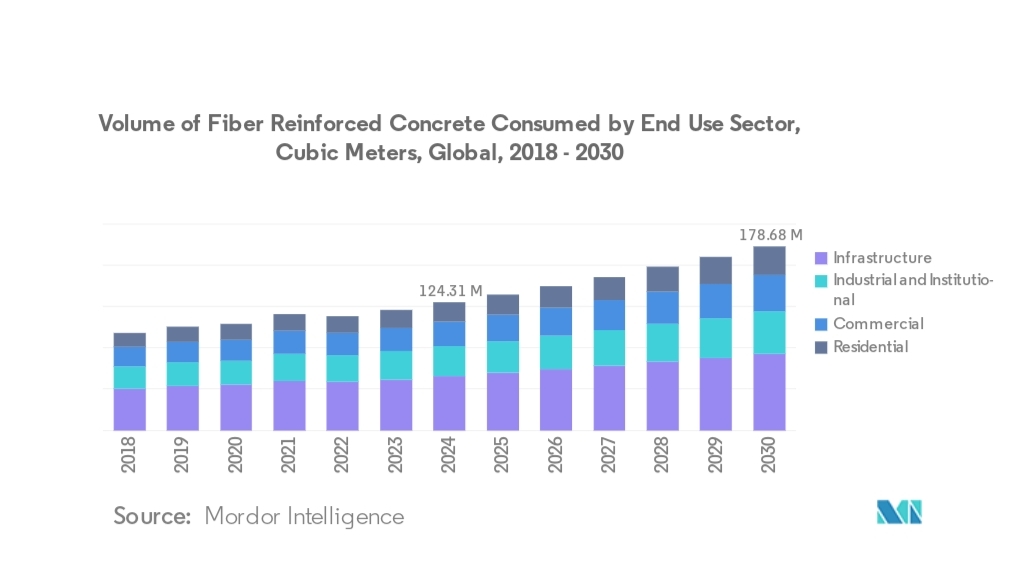
Asia- Pacific Market
According to Virtue Market and Research report, Asia-Pacific Concrete Fiber Market was estimated to be worth USD 835.80 Million in 2022 and is projected to reach a value of USD 1570.08 Million by 2030, growing at a CAGR of 8.2% during the forecast period 2023-2030.This surge can be attributed to robust investments in infrastructure and a notable uptick in retail and office spaces.
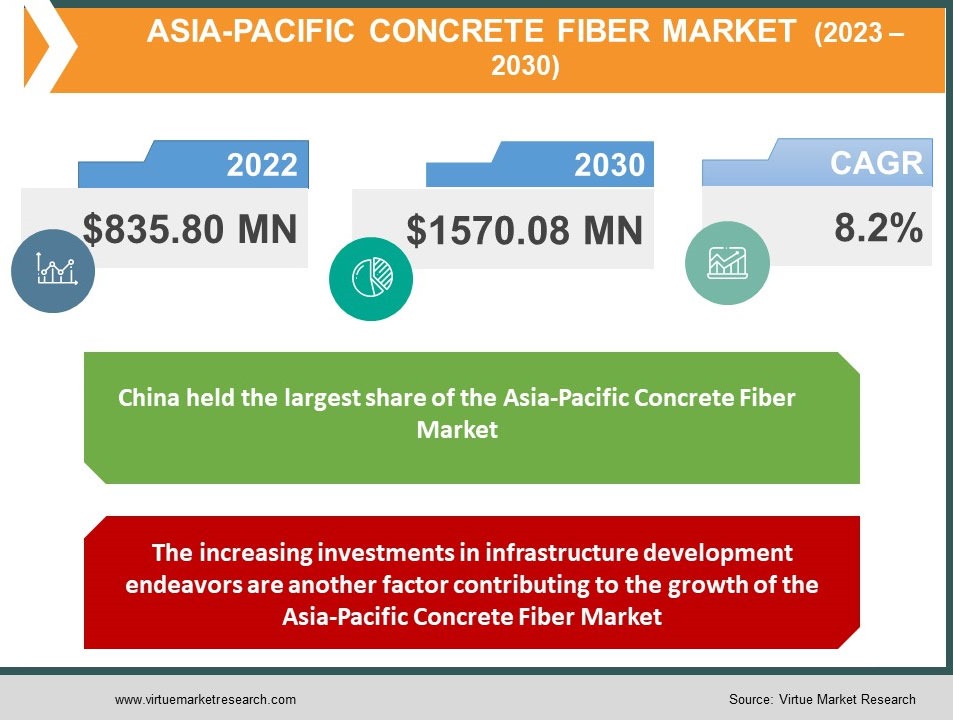
Conclusion
Fiber reinforced concrete (FRC) stands as a versatile and innovative material revolutionizing the landscape of modern construction. Its incorporation of various types of fibers enhances concrete's mechanical properties, such as tensile strength, toughness, and durability, while also mitigating issues like cracking and shrinkage. From structural elements to architectural facades, FRC finds application across a broad spectrum of construction projects, offering engineers and architects greater flexibility and reliability in design and execution.
Moreover, the diverse range of fibers, including steel, synthetic, and natural options, allows for tailored solutions to meet specific project requirements, whether it's for enhancing seismic resilience, improving fire resistance, or providing superior aesthetic finishes. With its proven track record in enhancing structural performance and longevity, FRC continues to be at the forefront of sustainable building practices, reducing maintenance needs and extending the lifespan of structures.
As the construction industry continues to evolve, FRC remains a cornerstone in pushing the boundaries of what's possible in building design and construction. With ongoing advancements in material science and engineering, coupled with a growing emphasis on sustainability and resilience, the future of fiber reinforced concrete looks promising, promising to shape the skylines of tomorrow with strength, durability, and innovation.
Cover Image- trpreadymix.com

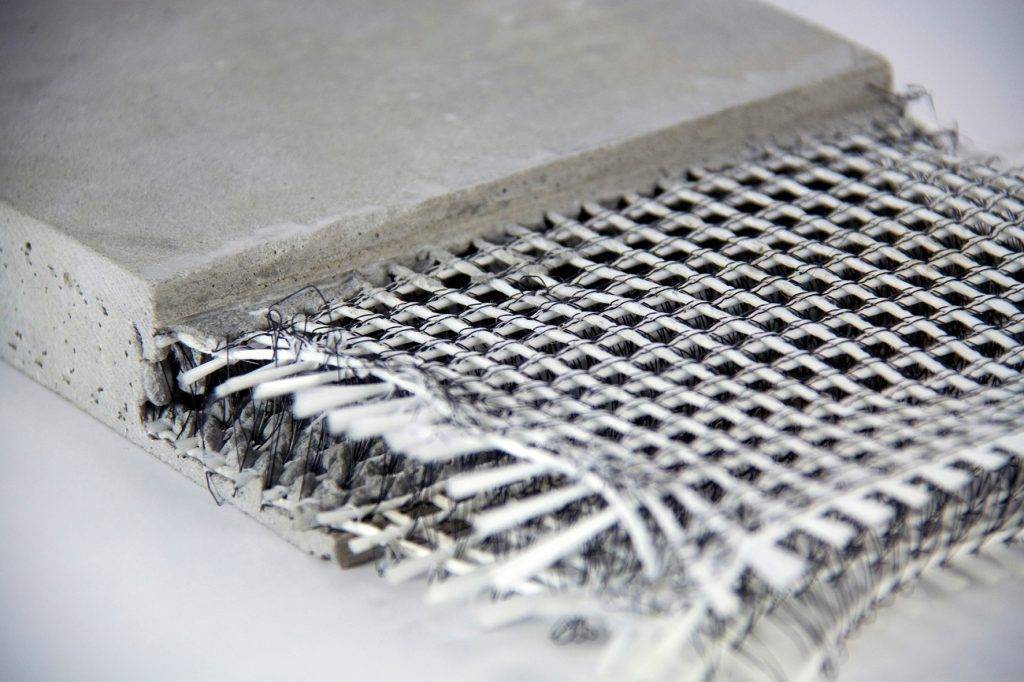

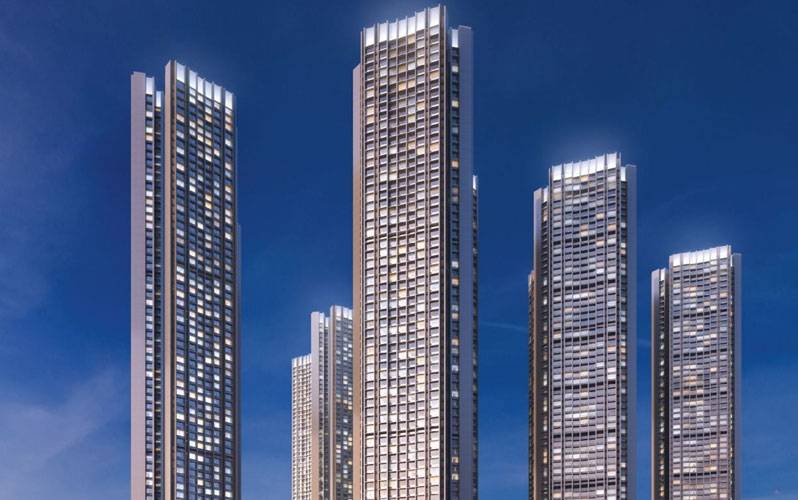

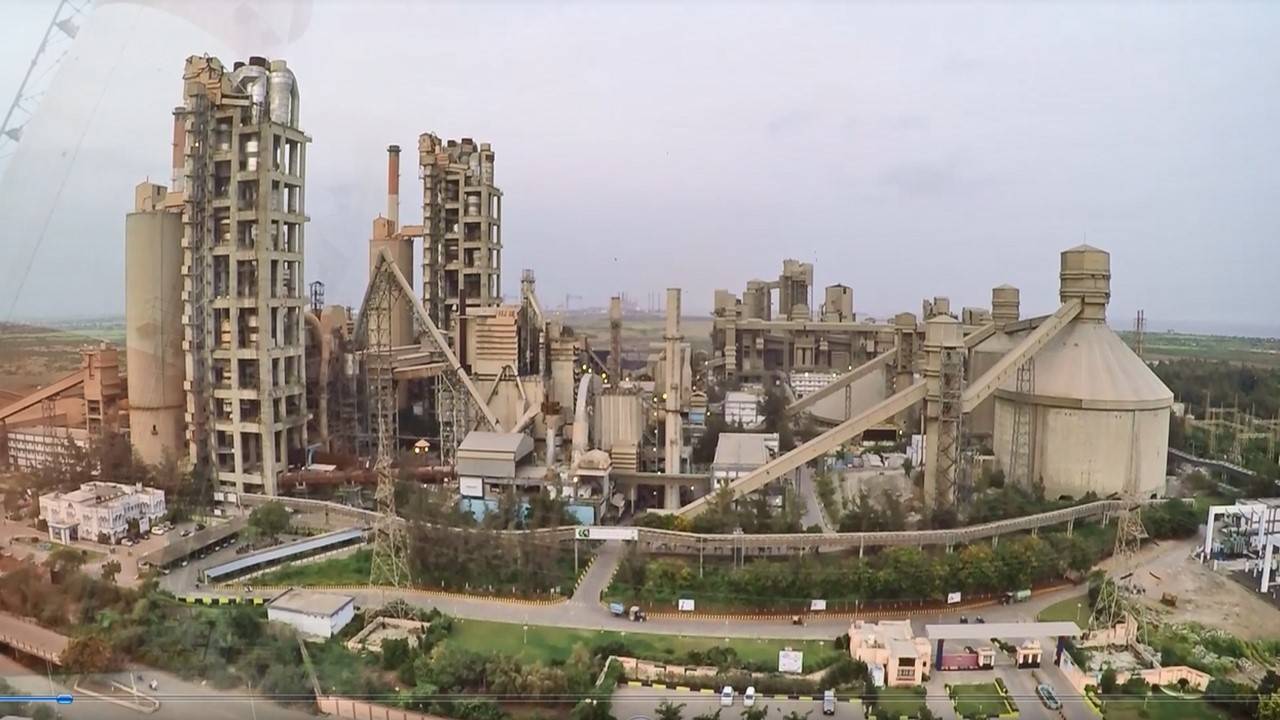
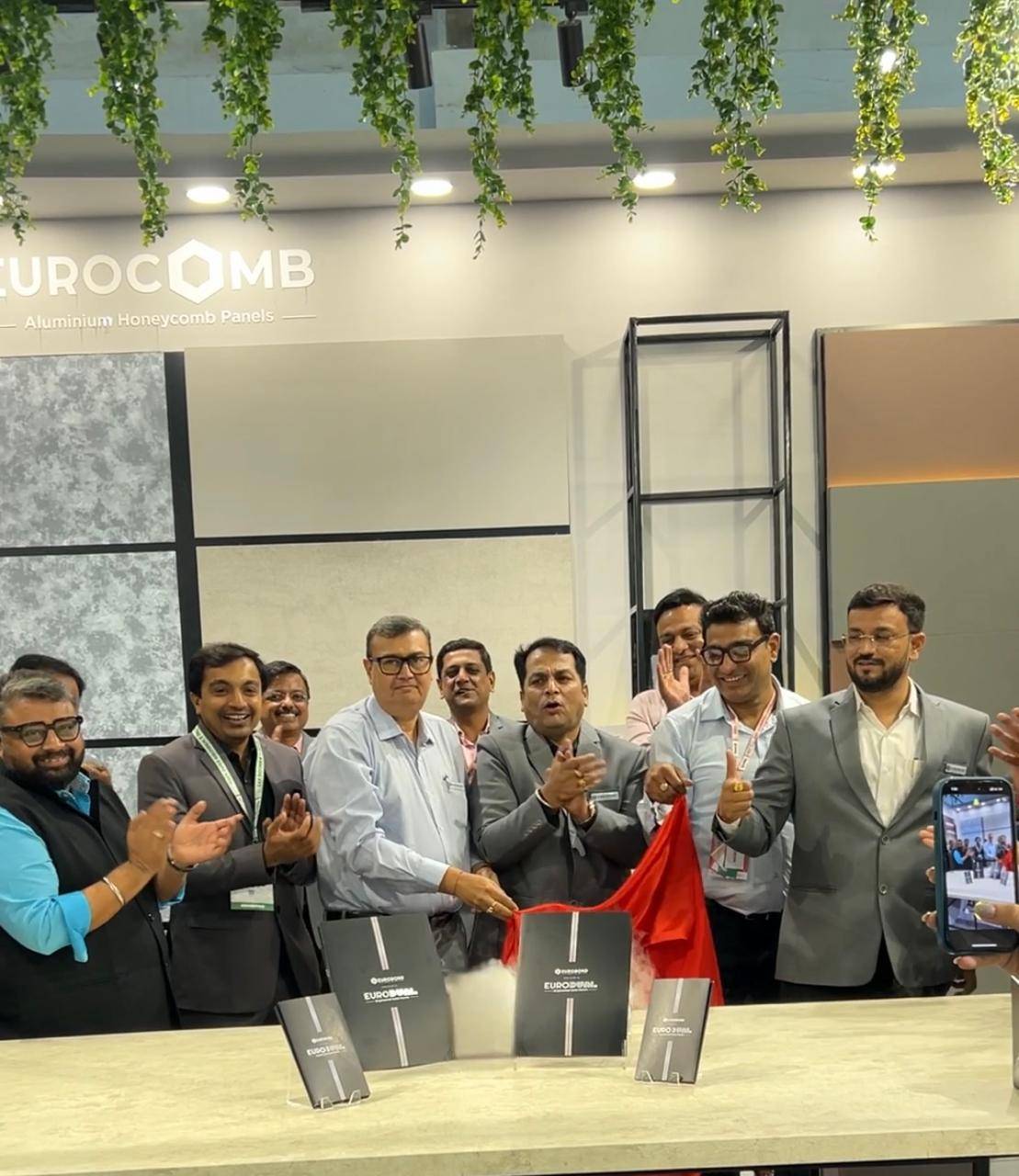
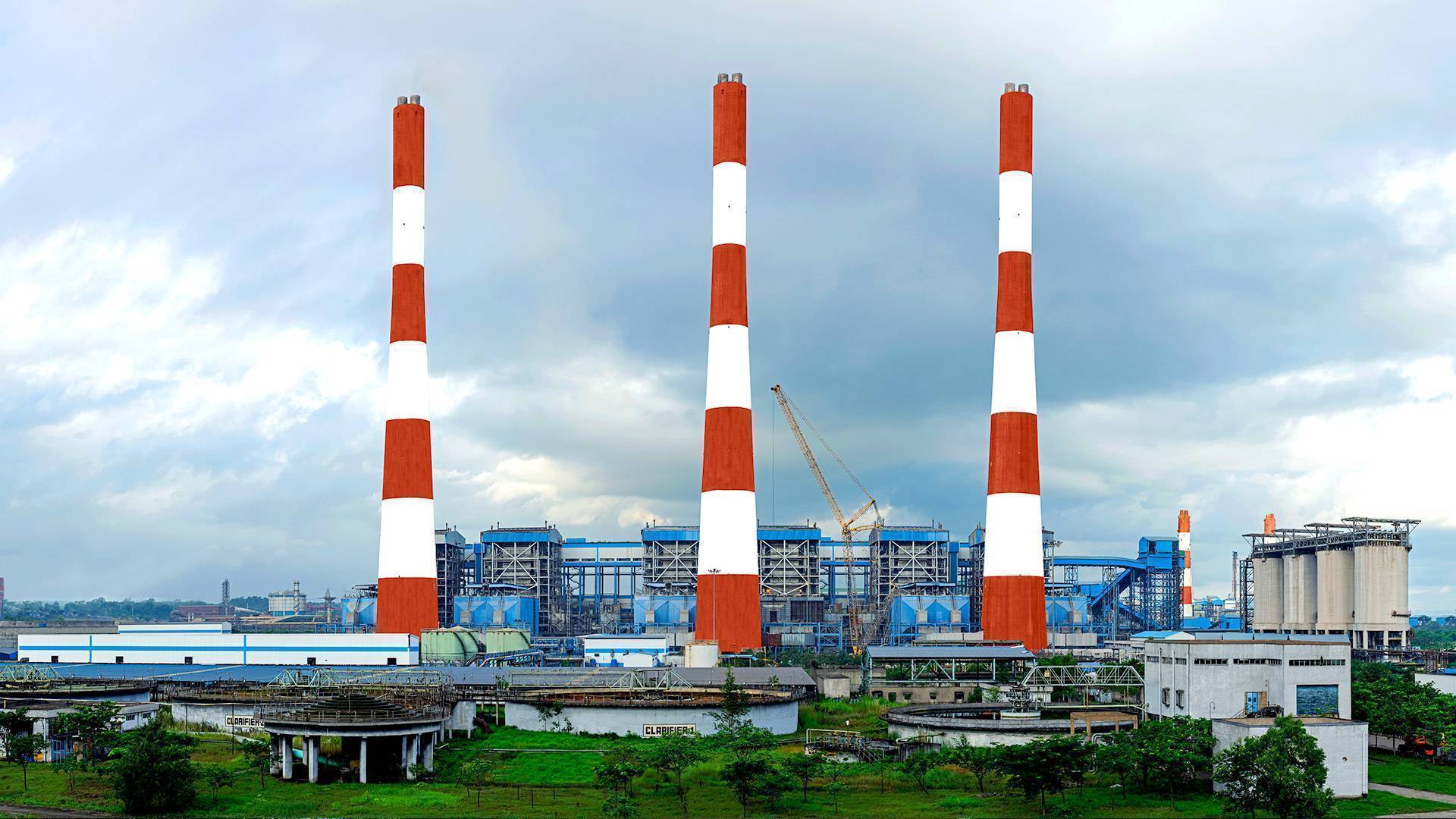
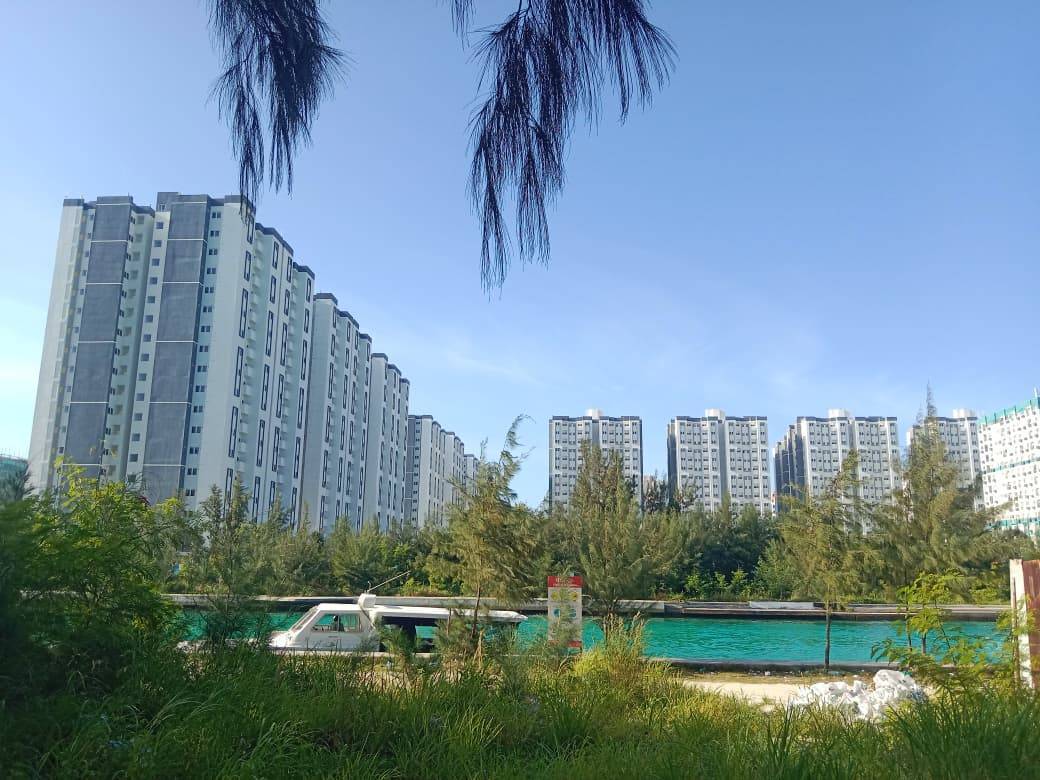
.png)